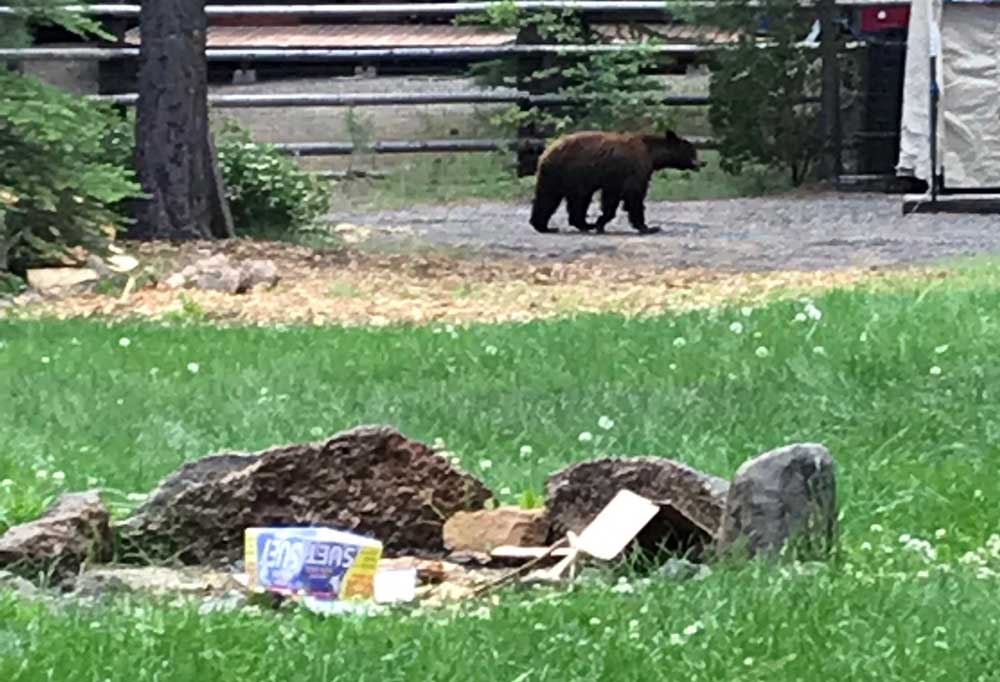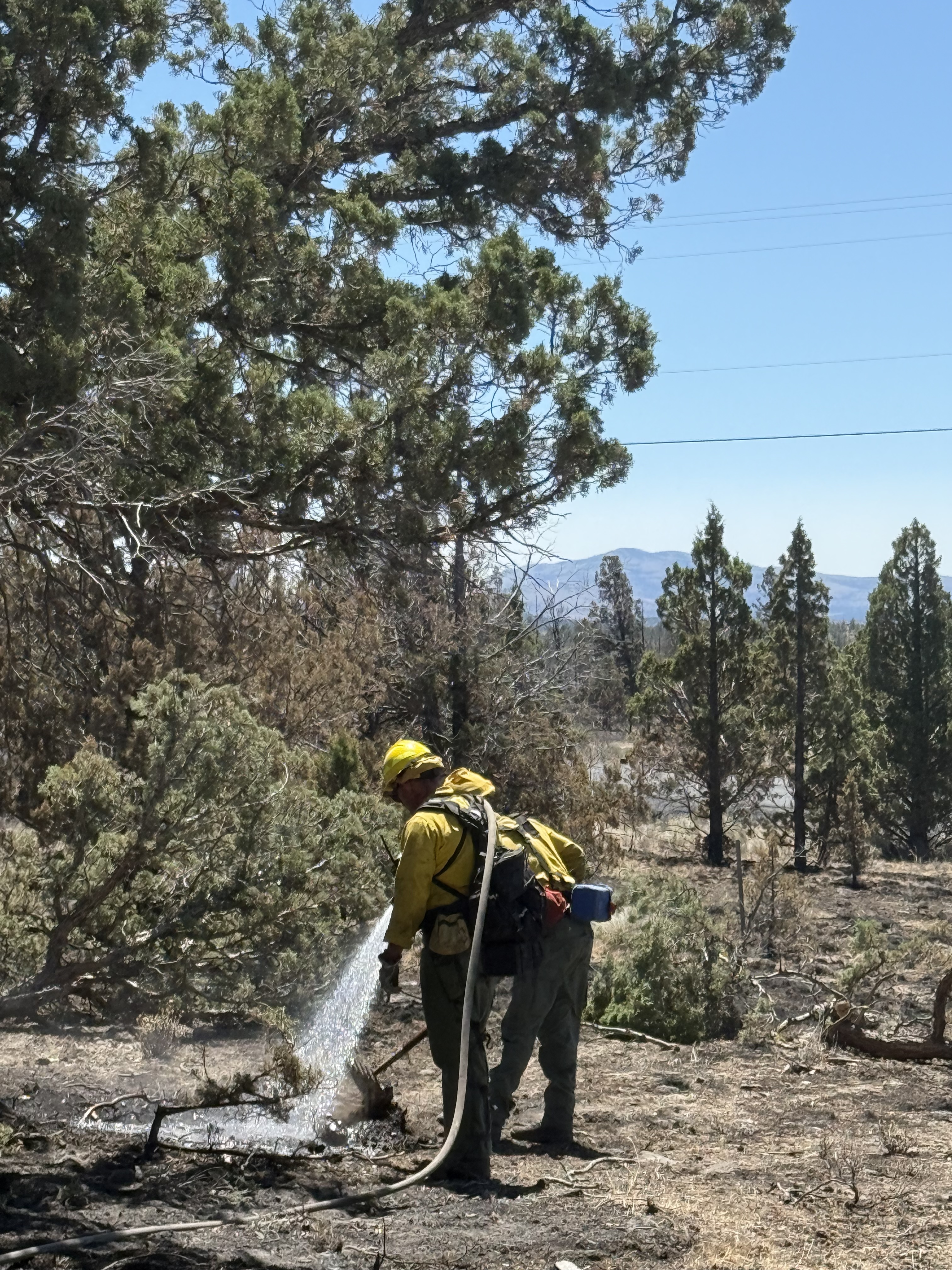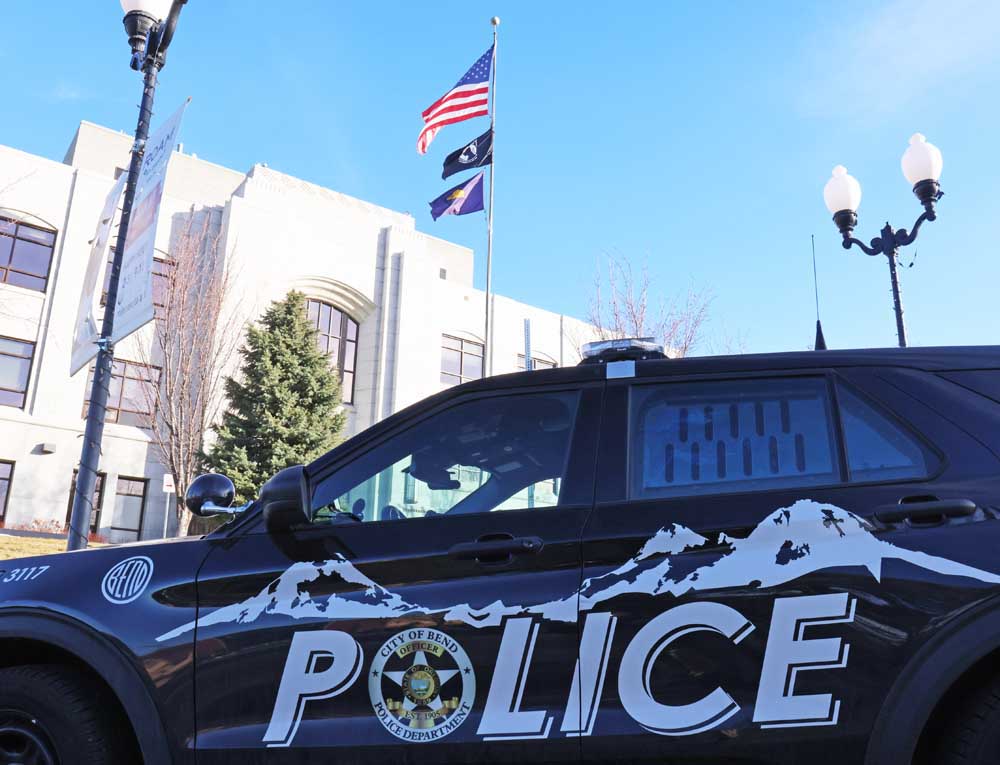Black bears not uncommon in Central Oregon
Published 12:00 am Saturday, July 20, 2019

- A male black bear is seen July 7 walking through Sunriver neighborhoods. (Deschutes County Sheriff’s Office/Submitted photo)
Following the black bear sighting last week in Sunriver that ended with the bear being shot and killed, wildlife officials are reminding residents to take precautions to avoid encounters with bears.
Black bears are native to Oregon, with about 25,000 to 30,000 living mostly in the remote forests across the state, but they can be drawn into populated towns if they have access to human food or garbage, said Corey Heath, an Oregon Department of Fish and Wildlife biologist.
Trending
“They are driven by their noses and their stomachs,” Heath said. “They go where the living is easy and where there are good food resources.”
Run-ins with black bears are rare in cities across Central Oregon. It is more common for people to see bears while on hiking trails or along streams, rather than bears wandering into town, Heath said.
Still, there is always a possibility of black bears making their way into the cities.
If black bears get too comfortable with people by finding food near homes or campgrounds, they can become a threat to people and often have to be killed. The best way to for people and bears to stay safe is for people to not feed them and not leave out food or garbage, Heath said.
“The old saying is, ‘A fed bear is a dead bear,’” Heath said. “Once they are fed, then they become a problem.”
Black bears leave the area where they were born to find new territory, and that can sometimes lead to them making an appearance in town.
Trending
“It could just be a natural movement, and they end up in the wrong place at the wrong time,”Heath said.
Black bears, the most common bear species in North America, can grow up to 300 pounds. They are not considered active predators, but are omnivorous, eating mostly a mix of berries and plants and small mammals and insects.
Oregon allows spring and fall bear hunting seasons.
In Central Oregon, black bears are typically found west of U.S. Highway 97 in the dense forest. Some have been found east of Bend among the junipers, but it is rare, Heath said.
Black bears roaming in the High Desert led to the legend of the Lava Bear, which is the mascot of Bend High School. In the 1920s, local residents started spotting small bears in the desert landscape outside of Bend, according to the Deschutes Historical Society. They described them as a separate species of bear. But the mythical Lava Bears turned out to be nothing more than malnourished black bears.
Wildlife officials do not have an official count of black bears in Central Oregon. The population is lower than other parts of the state, Heath said.
Sgt. William Bailey, of the Deschutes County Sheriff’s Office, said he can’t remember the last time deputies had to kill a bear before the July 7 incident in Sunriver.
“It’s not very frequent we have an interaction with a bear,” Bailey said. “Typically, when we do have an encounter, it can be scared off easily and wants to run away.”
The last sightings of black bears in Bend happened in 2010, when two were spotted within one week. The first was a male bear, between 15 and 16 months old and 50 pounds, that was roaming in southeast Bend, before wildlife biologists tranquilized it and released it west of Crane Prairie Reservoir.
The second sighting was a 300-pound male bear in a tree in the yard of a southwest Bend home. It was also tranquilized and released near Crane Prairie Reservoir.
Last week, the sheriff’s office responded to a residence on the 56800 block of Gina Lane near Sunriver, where the property owner was armed and guarding his livestock from a black bear.
Deputies tried to scare the bear off by shooting it with bean bags from 12-gauge shotguns. The bear was hit three times but didn’t run away.
The male bear, which weighed about 96 pounds, started walking through Sunriver neighborhoods, where children were playing outside.
Because the bear could not be scared away and was very close to people, a deputy shot and killed it.
“We really tried everything within our ability to scare the bear away, and the bear didn’t want to leave,” Bailey said. “It didn’t react the way you expect a bear to react.”
It is unknown why the bear came to Sunriver, Bailey said. Having to shoot it was a last resort.
“When it’s walking toward kids in a populated residential area, the deputy made the right decision to protect the community,” Bailey said.
— Reporter: 541-617-7820, kspurr@bendbulletin.com








